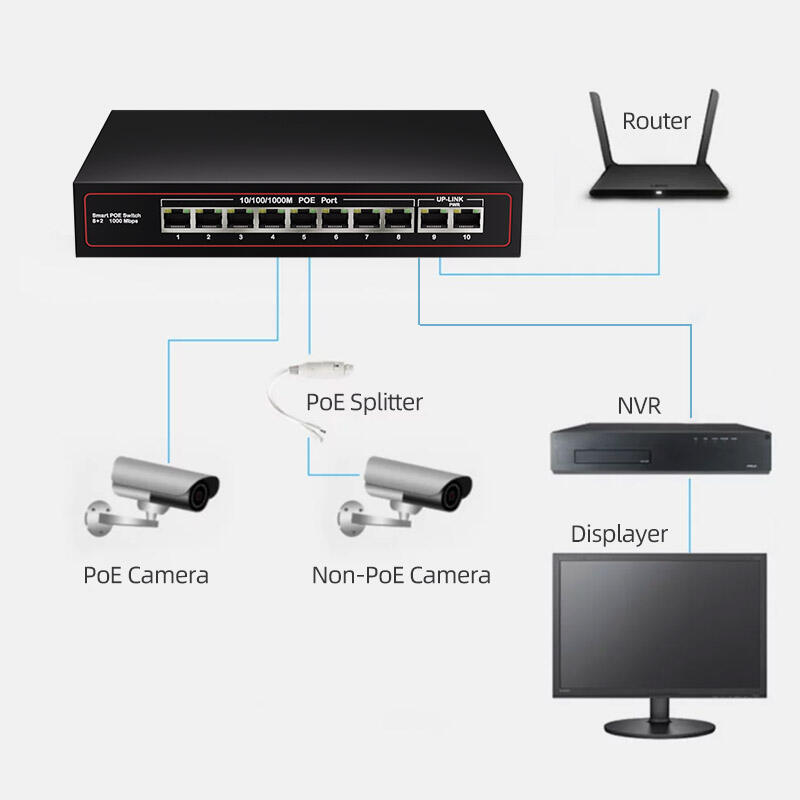
An Ethernet hub is a basic networking device that connects multiple Ethernet devices in a local area network (LAN), operating at the physical layer of the OSI model to receive data packets from one device and broadcast them to all other connected devices, which simplifies network setup but can lead to congestion in high-traffic environments. This simplicity makes the Ethernet hub suitable for small, low-bandwidth networks, such as home offices or small retail stores, where a few devices (computers, printers, basic IP cameras) need to share a network connection without complex configurations. Shenzhen Dasheng Digital Co., Ltd., a national high-tech enterprise with 15 years of expertise in industrial-grade communication equipment, manufactures Ethernet hubs that deliver reliable performance, low latency, and durable construction, ensuring stable operation for basic networking needs in light industrial and commercial applications. The Ethernet hub from this company is designed to support data transfer rates up to 1 Gbps, enabling efficient communication for small-scale smart security setups and digital education environments with a limited number of devices, and features plug-and-play functionality for easy installation without the need for technical expertise. These Ethernet hubs are built with compact designs to save space and energy-efficient components to reduce power consumption, making them cost-effective for small organizations. While Ethernet hubs are less advanced than switches (which direct data to specific devices), they remain a practical solution for simple networks where cost is a primary concern and traffic volume is low. Whether used to connect a few computers in a home office or to link basic sensors in a small industrial setup, the Ethernet hub from Shenzhen Dasheng Digital Co., Ltd. leverages the company’s commitment to quality to provide a reliable foundation for basic network connectivity, supporting the industry’s transition to more advanced systems while meeting the needs of users with simple networking requirements.
